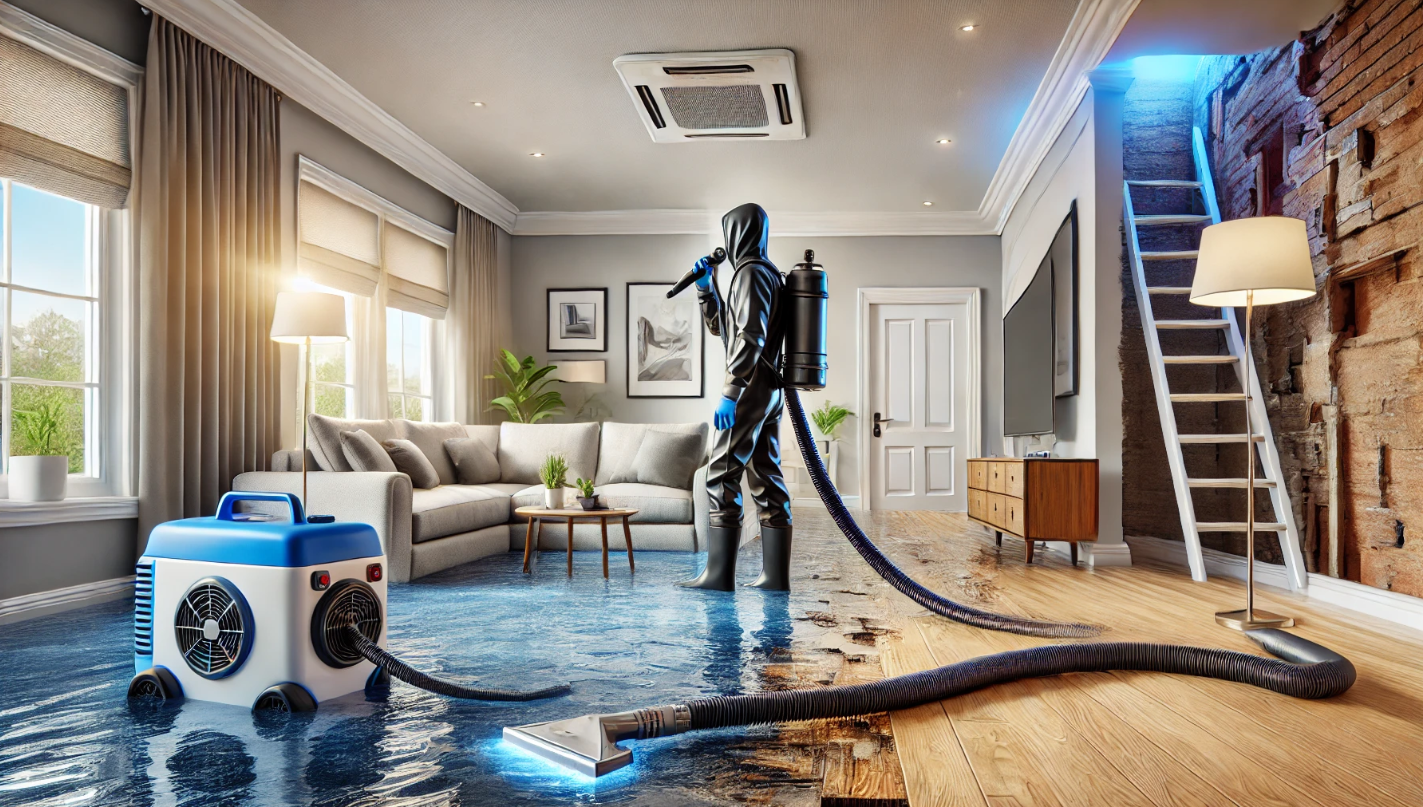How to Handle Water Damage: Expert Tips for Quick Restoration & Prevention

Water damage can happen suddenly, whether due to a burst pipe, heavy rain, or appliance malfunction. If not handled properly, it can lead to structural issues, mold growth, and expensive repairs. Acting quickly is essential to minimize the damage and restore your property efficiently.
Professional water damage restoration services play a crucial role in mitigating the effects of water-related disasters. These experts use specialized equipment and techniques to extract water, dry affected areas, and prevent long-term damage. Understanding the restoration process and taking immediate action can help homeowners and businesses recover quickly.
Step 1: Ensure Safety First
Before addressing water damage, prioritize safety. Water exposure can create electrical hazards, weaken structures, and introduce contaminants into your home. Follow these essential precautions:
-
Turn Off Electricity: If water has reached electrical outlets or appliances, shut off power at the main breaker to avoid electrical shock.
-
Stop the Water Source: If the damage is caused by a plumbing issue, locate and turn off the main water supply.
-
Wear Protective Gear: Standing water may contain bacteria, sewage, or chemicals. Use gloves, boots, and masks when dealing with contaminated areas.
If the situation is severe, evacuate and wait for professionals to assess the risks before re-entering.
Step 2: Remove Standing Water Immediately
The longer water sits, the more damage it causes. Standing water can seep into walls, flooring, and furniture, leading to rot and mold growth. Here’s how to remove it effectively:
-
Utilize a wet/dry vacuum: Ideal for small-scale flooding, this device efficiently extracts excess water.
-
Pump Out Large Amounts of Water: Submersible pumps are useful for draining water from basements or heavily affected areas.
-
Mop and Absorb Water: Use towels and mops to soak up smaller puddles to prevent further spreading.
Professional restoration teams use industrial pumps and extraction tools to remove water quickly, reducing the risk of long-term damage.
Step 3: Dry and Dehumidify Affected Areas
Simply removing visible water isn’t enough. Moisture can linger in walls, rugs and furniture, leading to mold growth within 24-48 hours. To dry your space thoroughly:
-
Increase Air Circulation: Open windows and doors to allow fresh air in.
-
Use Fans and moisture controller: High-powered air movers and moisture control devices speed up the drying process and remove excess moisture from the air.
-
Concealed Dampness: Utilize a moisture meter to identify hidden wet spots within walls or under flooring.
If moisture remains trapped, it can lead to serious structural issues, so a thorough drying process is crucial.
Step 4: Salvage and Clean Your Belongings
Water can damage furniture, electronics, documents, and other valuable possessions. Assess which items can be saved and which need to be discarded.
-
Remove and Dry Upholstery: Take furniture and rugs outside to dry under the sun if possible.
-
Clean Hard Surfaces: Use disinfectants to clean floors, countertops, and other non-porous materials.
-
Seek Professional Help for Electronics: Water-damaged devices should be inspected by a technician before attempting to use them.
Mold can quickly grow on damp materials, so drying and disinfecting affected items promptly is critical.
Step 5: Prevent Mold Growth
Mold thrives in damp environments and can pose health risks, especially for individuals with allergies or respiratory conditions. To prevent mold infestations:
-
Remove Wet Items Promptly: Discard items that cannot be fully dried, such as soaked carpets or insulation.
-
Use Mold Inhibitors: Apply antimicrobial treatments to walls, floors, and affected surfaces.
-
Keep Humidity Levels Low: Maintain indoor humidity below 50% using dehumidifiers.
If you notice musty odors or mold spots, contact a professional remediation service to prevent further spread.
Step 6: Repair and Restore Damaged Areas
Once everything is dry and clean, begin the restoration process to bring your home back to its original condition.
-
Replace Damaged Drywall and Flooring: If materials are beyond repair, they should be replaced to prevent future structural issues.
-
Paint and Seal Walls: Applying fresh paint and sealants helps protect against future moisture damage.
-
Inspect Plumbing and Roofing: Fix leaks or weak spots to prevent another water-related disaster.
Professional water damage restoration teams handle repairs efficiently, ensuring your home is fully restored and protected.
Step 7: Take Preventive Measures to Avoid Future Water Damage
After restoration, it’s essential to implement preventative strategies to reduce the risk of water damage in the future.
-
Regularly Inspect Pipes and Plumbing: Look for leaks, rust, or weak spots in your plumbing system.
-
Maintain Gutters and Downspouts: Ensure proper drainage to prevent water from pooling around your home’s foundation.
-
Install a Sump Pump: If your home is prone to basement flooding, a sump pump can help prevent water accumulation.
-
Seal Windows and Doors: Check for gaps or cracks that could allow water intrusion during storms.
Taking these precautions can protect your home and reduce the likelihood of costly water damage incidents.
Conclusion
Handling water damage efficiently requires quick action and a structured approach. By ensuring safety, removing excess water, drying affected areas, and preventing mold growth, you can minimize damage and restore your property effectively.
For a thorough recovery process, professional water cleanup services can provide the expertise and equipment needed to ensure complete restoration. Being proactive in preventing water damage will help safeguard your home against future incidents, giving you peace of mind in the long run.
- Questions and Answers
- Opinion
- Motivational and Inspiring Story
- Technology
- Live and Let live
- Focus
- Geopolitics
- Military-Arms/Equipment
- Segurança
- Economy
- Beasts of Nations
- Machine Tools-The “Mother Industry”
- Art
- Causes
- Crafts
- Dance
- Drinks
- Film/Movie
- Fitness
- Food
- Jogos
- Gardening
- Health
- Início
- Literature
- Music
- Networking
- Outro
- Party
- Religion
- Shopping
- Sports
- Theater
- Health and Wellness
- News
- Culture

